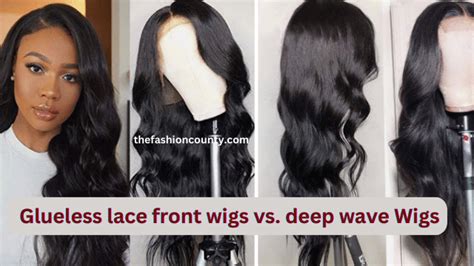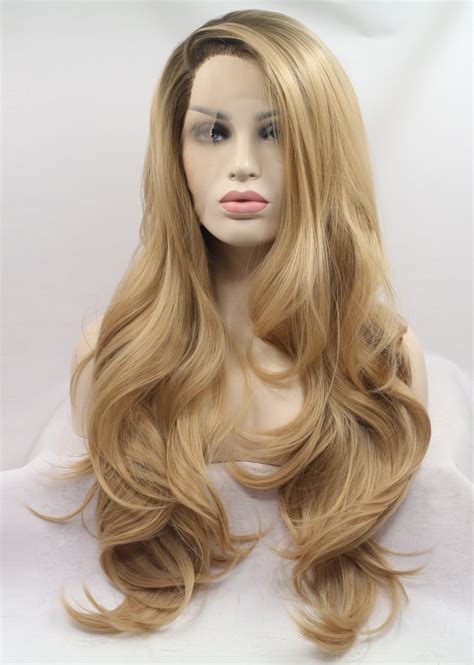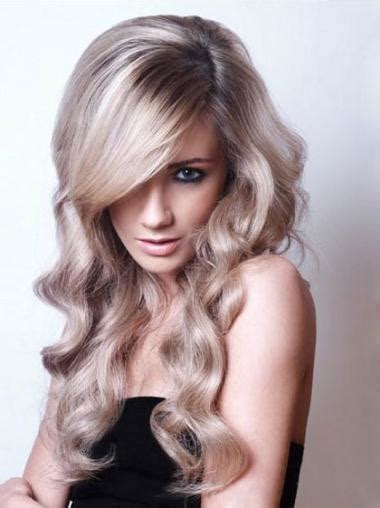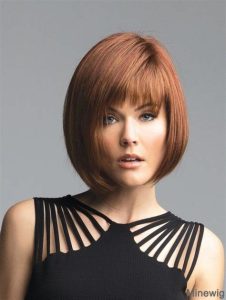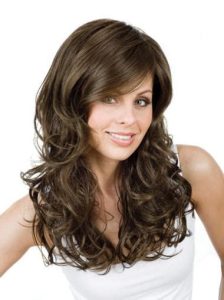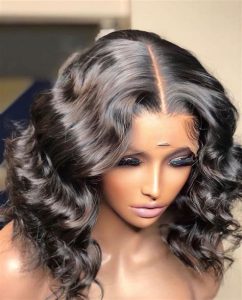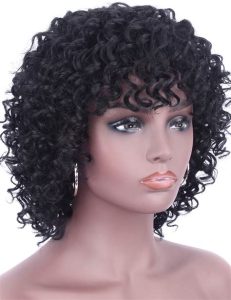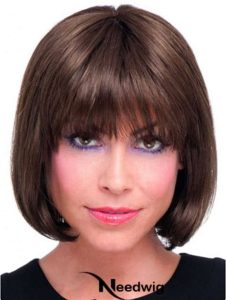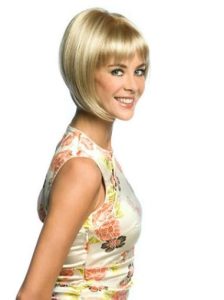Women’s Wigs 2025: The Ultimate Battle: Monofilament vs Lace
Embark on a Journey of Style and Comfort: Immerse Yourself in the World of Premium Wigs
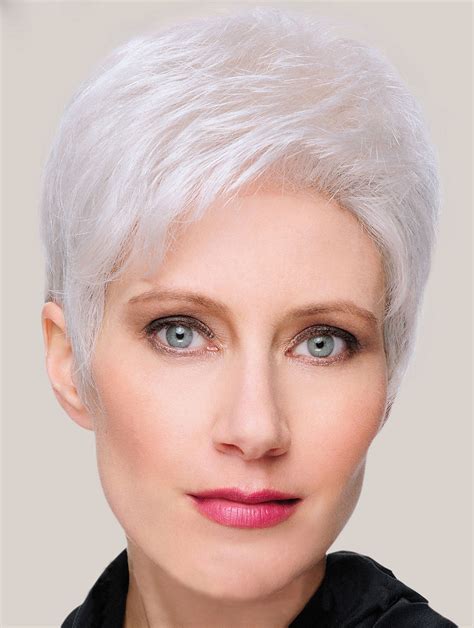
When seeking the perfect wig to complement your unique style and enhance your self-confidence, it’s essential to explore the nuances of different wig constructions. Among the myriad options available, monofilament and lace wigs stand out as exceptional choices, each offering distinct advantages that cater to specific preferences and needs.
Monofilament Wigs: A Natural Canvas for Precision and Breathability
Monofilament wigs are renowned for their natural appearance, seamlessly blending with your scalp to create an illusion of effortlessly growing hair. The innovative monofilament base, a sheer and breathable fabric, allows for individual hairs to be hand-tied, resulting in a realistic and natural-looking hairline. This construction method provides unparalleled comfort, as the delicate monofilament conforms to the contours of your head, ensuring a secure and comfortable fit.
Lace Wigs: A Tapestry of Versatility and Intricate Detail
Lace wigs, on the other hand, offer a different realm of wig-wearing experiences. Crafted with a delicate lace base, these wigs provide unmatched versatility, allowing you to style and part the hair in a multitude of ways. The intricate lace mimics the natural scalp, ensuring a seamless transition between your own hair and the wig. Lace wigs are particularly suitable for those seeking a more natural-looking hairline, as the lace can be cut and customized to perfectly match your skin tone and hairline.
A Tale of Two Wigs: Unveiling the Differences
While both monofilament and lace wigs share the common goal of enhancing your appearance and confidence, they diverge in certain aspects that may influence your choice.
-
Natural Appearance: Monofilament wigs excel in providing a realistic and natural-looking hairline, while lace wigs offer more versatility in styling and parting options.
-
Breathability and Comfort: Monofilament wigs are generally more breathable and comfortable due to their lightweight and airy construction, while lace wigs may require additional cooling measures, such as wig caps, to enhance comfort during extended wear.
-
Durability: Both monofilament and lace wigs require careful handling and maintenance to ensure their longevity. However, lace wigs tend to be more delicate and may require more frequent repairs or replacements.
Unveiling the Pain Points: Addressing Common Concerns
Understanding the potential pain points associated with wig-wearing can help you make an informed decision and alleviate any concerns.
-
Scalp Irritation: Some individuals may experience scalp irritation or allergic reactions to the materials used in wigs, including monofilament and lace. It’s crucial to conduct a patch test before committing to a particular wig to minimize the risk of adverse reactions.
-
Heat Sensitivity: Synthetic wigs may be sensitive to heat, limiting your styling options and increasing the risk of damage if exposed to excessive temperatures. Human hair wigs, on the other hand, offer more heat resistance, allowing for greater styling versatility.
-
Styling Challenges: Styling wigs can be a learning curve, especially for beginners. Lace wigs offer more styling freedom, but they may require more advanced techniques to achieve certain styles.
Harnessing the Motivators: Why Monofilament and Lace Wigs Matter
Embracing a wig can be a transformative experience, unlocking a world of style, confidence, and self-expression. Monofilament and lace wigs empower individuals to overcome hair-related challenges and embrace their unique beauty.
-
Confidence and Empowerment: Wigs provide an instant boost of confidence, enabling individuals to feel beautiful and self-assured regardless of their natural hair texture or volume.
-
Versatility and Style: Wigs offer endless possibilities for style experimentation, allowing you to explore different looks and colors without committing to permanent changes.
-
Hair Loss Solutions: Wigs are invaluable tools for managing hair loss due to medical conditions, alopecia, or personal preferences, providing a discreet and stylish solution.
Effective Strategies: Optimizing Your Wig-Wearing Experience
Maximizing the benefits of your monofilament or lace wig requires a few simple strategies.
-
Proper Care and Maintenance: Regular washing, conditioning, and styling your wig according to the manufacturer’s instructions will ensure its longevity and maintain its pristine condition.
-
Invest in Quality: Choosing high-quality wigs made from premium materials will not only enhance their appearance but also extend their lifespan.
-
Seek Professional Advice: Consulting with a wig expert or stylist can provide valuable guidance on wig selection, styling, and maintenance, ensuring the best possible experience.
Expanding Market Insights: The Future of Wigs
The wig market is constantly evolving, driven by advancements in technology and innovative materials. Monofilament and lace wigs continue to dominate the industry, with new trends emerging.
-
Customized Wigs: The growing demand for tailored solutions has led to the rise of customized wigs, designed to perfectly match the wearer’s unique features and preferences.
-
Synthetic Wig Innovations: Synthetic wigs are becoming increasingly sophisticated, offering realistic textures, colors, and heat resistance, blurring the lines between natural and artificial hair.
-
Smart Wigs: The integration of technology into wigs is gaining momentum, with smart wigs capable of monitoring scalp health, tracking hair growth, and providing personalized styling recommendations.
Frequently Asked Questions (FAQs)
Q1. Which wig type is more suitable for sensitive scalps?
A: Monofilament wigs are generally more breathable and less likely to irritate sensitive scalps.
Q2. Can I dye or bleach lace wigs?
A: Lace wigs made from human hair can be dyed or bleached, but it’s crucial to use professional colorists to avoid damage.
Q3. How often should I wash my wig?
A: The frequency of washing depends on the wig’s usage and the wearer’s scalp condition. General guidelines suggest washing synthetic wigs every 8-12 wears and human hair wigs every 4-6 wears.
Q4. How can I make my wig look more natural?
A: Proper styling techniques, such as using root touch-up sprays and avoiding excessive hairspray, can enhance the natural appearance of wigs.
Q5. Can I wear a wig while sleeping?
A: Wearing a wig while sleeping is generally not recommended, as it can cause friction and damage the wig.
Q6. What are the benefits of monofilament wigs over traditional wigs?
A: Monofilament wigs provide a more natural-looking hairline, enhanced breathability, and greater comfort due to their lightweight and airy construction.
Useful Tables
Table 1: Comparison of Monofilament and Lace Wigs
| Feature | Monofilament Wigs | Lace Wigs |
|---|---|---|
| Hairline | Natural-looking | Customizable |
| Breathability | High | Moderate |
| Comfort | Excellent | Good |
| Versatility | Limited | High |
Table 2: Pain Points and Solutions
| Pain Point | Solution |
|---|---|
| Scalp irritation | Conduct a patch test, use breathable wigs |
| Heat sensitivity | Opt for heat-resistant wigs, use heat protectant sprays |
| Styling challenges | Seek professional guidance, practice styling techniques |
Table 3: Effective Strategies
| Strategy | Benefits |
|---|---|
| Proper care and maintenance | Extends wig lifespan, maintains appearance |
| Invest in quality | Enhances aesthetics, improves durability |
| Seek professional advice | Ensures optimal selection, styling, and maintenance |
Table 4: Market Insights
| Trend | Implications |
|---|---|
| Customized wigs | Cater to individual preferences, improve satisfaction |
| Synthetic wig innovations | Enhance realism, expand style options |
| Smart wigs | Monitor scalp health, provide personalized styling recommendations |
